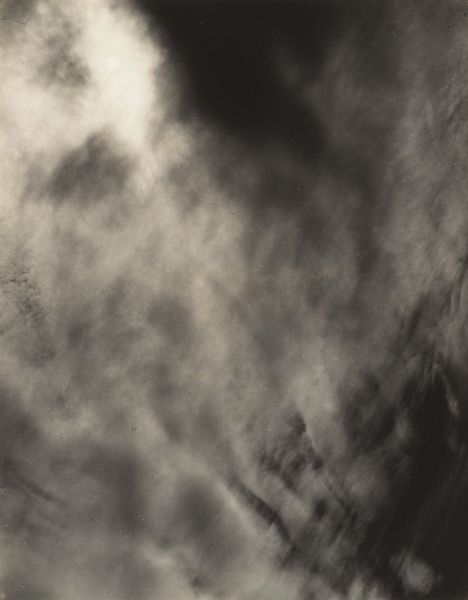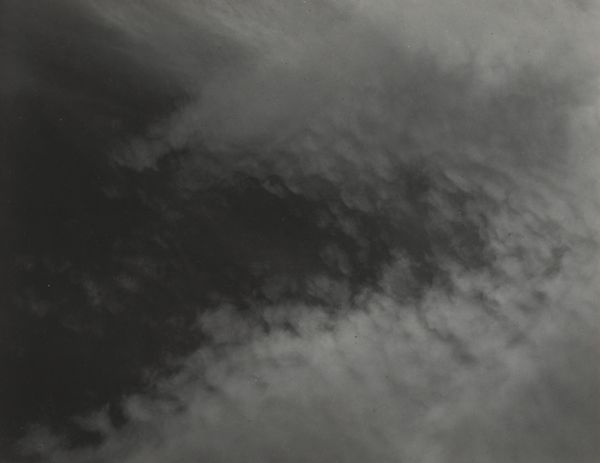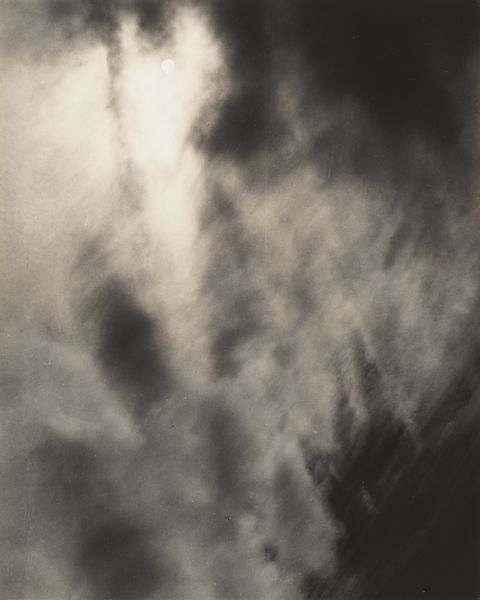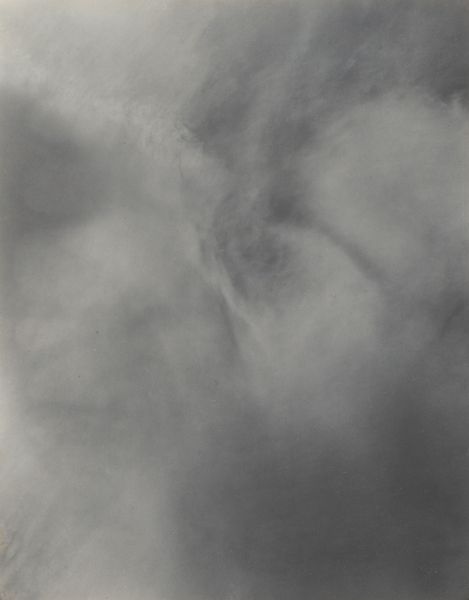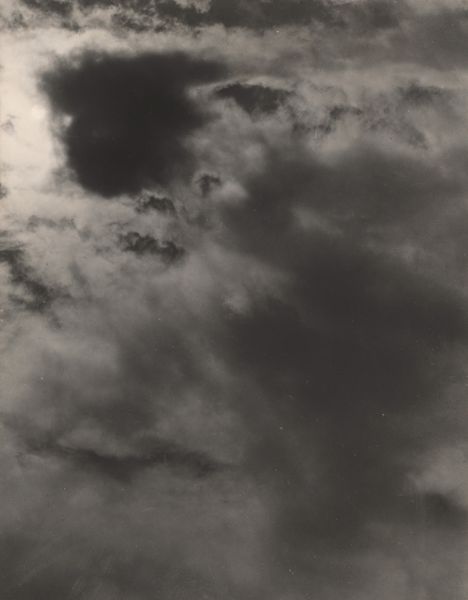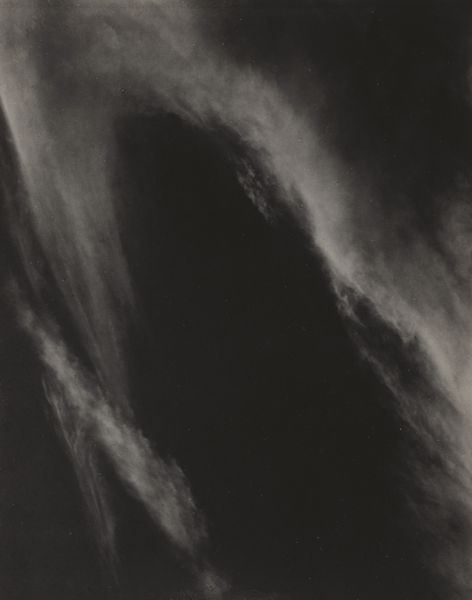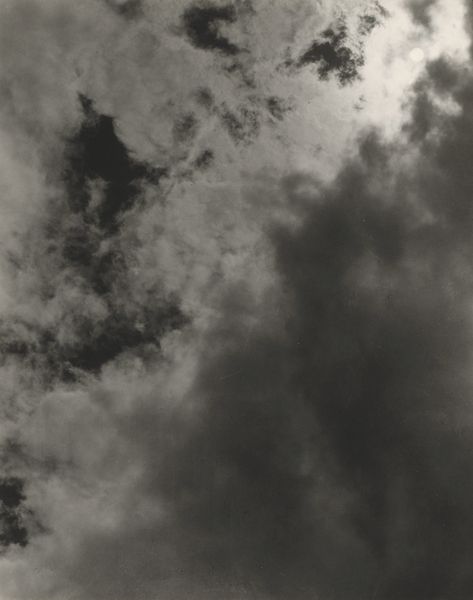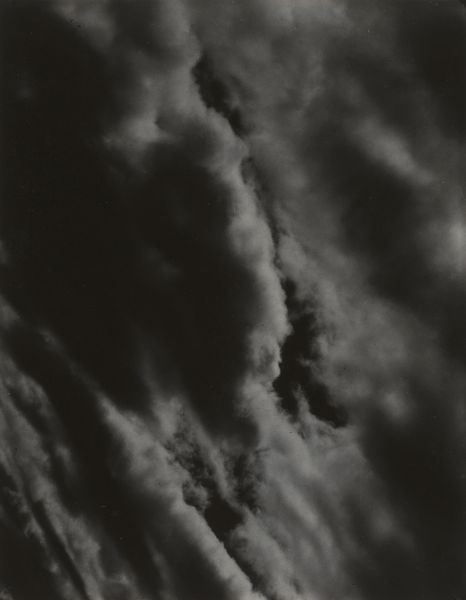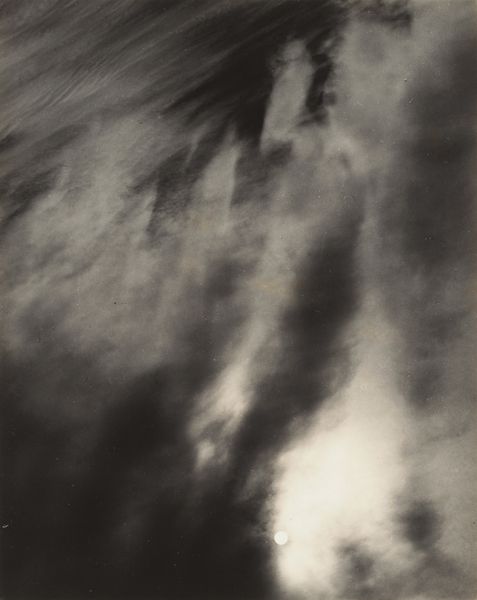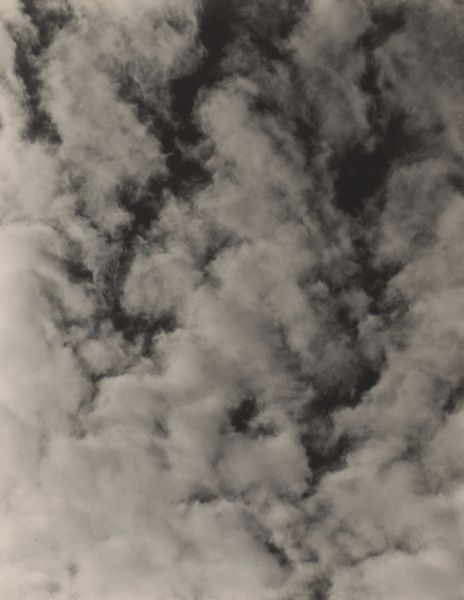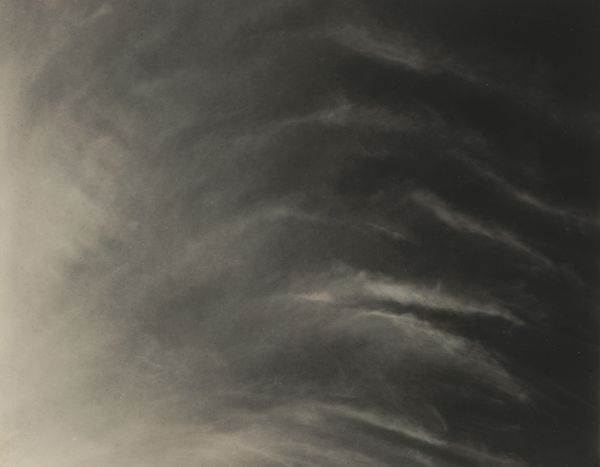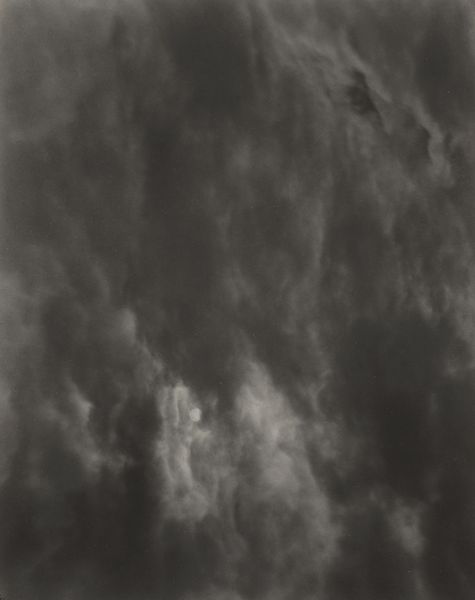
Dimensions: sheet (trimmed to image): 11.7 x 9.2 cm (4 5/8 x 3 5/8 in.)
Copyright: National Gallery of Art: CC0 1.0
Curator: Gazing upward, one is immediately struck by the delicate drama unfolding across this photograph. The contrast between light and dark imbues it with a powerful, almost spiritual quality. Editor: That’s an interesting read! I am immediately drawn to the image's formal qualities; the gradations of tone, the compositional arrangement. There is something ethereal about how the tones evoke shifting patterns and light within this abstract space. Curator: Indeed. This is one of Alfred Stieglitz's "Equivalents," a series he began in the mid-1920s, created to represent inner states through cloud formations. They aimed to divorce photography from mere representational purpose. We should examine the social factors that inspired this work; it coincided with a broader artistic turn toward abstraction driven by modern life. Editor: So, it's the *feeling* of the clouds that truly matters. Semiotically, what do they *mean*? Perhaps the swirling shapes act as symbols. How can one begin to grasp the formal dynamics of form and the play of light without first understanding the historical and emotional weight Stieglitz was trying to capture in this photograph? Curator: It's not just about reading clouds. It is equally relevant to remember Stieglitz’s labor in dark room processing. How those techniques altered or informed these final forms as well as reflect on the accessibility of photography itself as a medium in a rapidly changing social landscape. Editor: I can see your point. I would suggest that regardless of the production methods or external context, the composition alone demonstrates a keen awareness of how arrangement and light can construct an emotive, non-representational, piece of art. The formal elements constitute the expressive power inherent to it, regardless of its wider influences. Curator: Yes, ultimately the tension lies in balancing a work’s internal structure against the economic and societal framework that made its creation and perception viable to start with. It is the marriage of both that makes art resonate! Editor: A beautiful resolution to what it feels like to appreciate an art piece. Thanks.
Comments
No comments
Be the first to comment and join the conversation on the ultimate creative platform.
